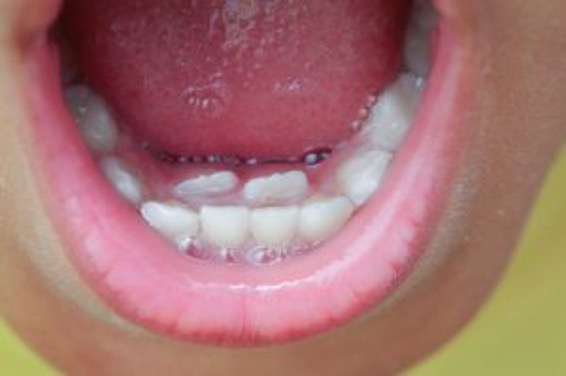Normally, permanent teeth erupt directly beneath the baby teeth, thus causing those baby teeth to begin to wiggle and ultimately fall out. Nevertheless, sometimes the permanent teeth will erupt behind the baby teeth in which you will find two rows of teeth in the mouth. This can often be referred to as “shark teeth” since sharks are known for having two rows of teeth in their mouths.
This condition is common and can often occur in the lower front teeth. While this may seem like a situation needing immediate attention, it seldom causes an issue for the child. Whether the child is able to finally wiggle the baby teeth out in the near future or the dentist needs to help wiggle in the office, once the baby teeth are gone, the permanent teeth will begin to shift into a more optimal position from the force of the tongue when eating and talking. Luckily, the lip will keep the teeth from moving too far forward.
Did you know?
On average, sharks have 15 rows of teeth on the bottom and the top, but mostly they only have about five rows. In some species, sharks can have up to 50 rows of teeth with 7 teeth in each row: that’s 350 teeth at one time! These sharks can have over 50,000 teeth throughout their lifetime. But, shark teeth do not have roots and are weak, so they fall out easily. Unlike humans, a shark’s tooth can be replaced in a day!
